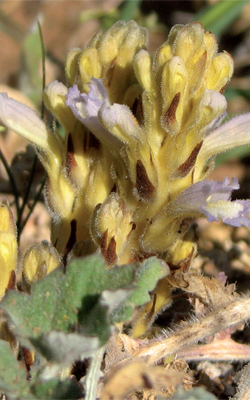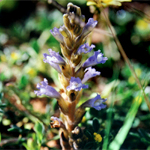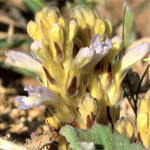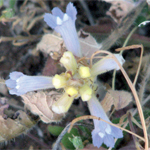Branched broomrape

Branched broomrape (Orobanche ramosa L.) is declared under the Catchment and Land Protection Act 1994 as a State prohibited weed. It is also declared as exotic under the Plant Biosecurity Act 2010.
If you find branched broomrape
If you think you have seen branched broomrape, please contact us by:
- completing this form
- calling our Customer Service Centre on 136 186
- emailing weed.spotters@agriculture.vic.gov.au
Please do not attempt to treat or dispose of this weed yourself. We will treat, remove and dispose of branched broomrape plants safely, at no cost to the land owner.
Why you must report branched broomrape
Branched broomrape is a parasitic weed that extracts nutrients from a range of common broadleaf crop and pasture plants, reducing yield.
It is a parasite on a range of:
- broadleaf crops
- pasture plants
- weeds
- some indigenous flora.
Vulnerable crops include:
- beans
- cabbage
- canola
- carrot
- chickpea
- clovers
- onion
- tomato
- potato.
Broomrape attaches to the host plant's roots, extracting nutrients and water. Crop losses of 30% to 70% can occur. Because of this, it poses a serious threat to Victoria's agriculture through lost production and threatening our export trade.
A plant can produce 20,000 seeds a year, which may persist in the soil for up to 12 years.
Branched broomrape in Australia
Branched broomrape is native to Europe, North Africa and the Middle East. To date, branched broomrape has not been found in Victoria, and its distribution has been restricted to the Murray Bridge area of South Australia.
It is not known how introduction occurred.
Identifying branched broomrape
Branched broomrape is an upright, annual fleshy plant that:
- is 5cm to 30cm tall
- does not have any green pigment
It grows underground for about 6 weeks then emerges in late spring or early summer when it flowers and sets seed within a 2-week period.
It has 1 or many irregular stems often branched just above ground level, brown or straw-yellow in colour. Leaves are reduced, with dark brown or purplish scales.
Flowers are numerous and tubular (15mm long). Petals are most often pale blue to violet, but can tend towards white or yellow.
The plant turns brown after flowering and the stems persist after seeding.


